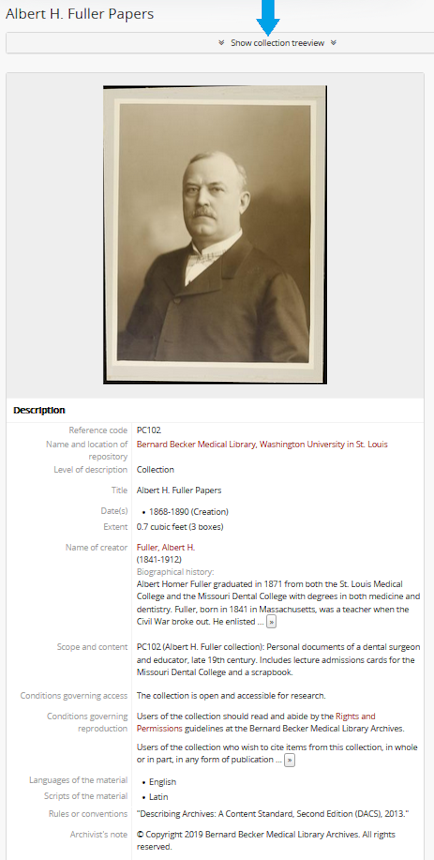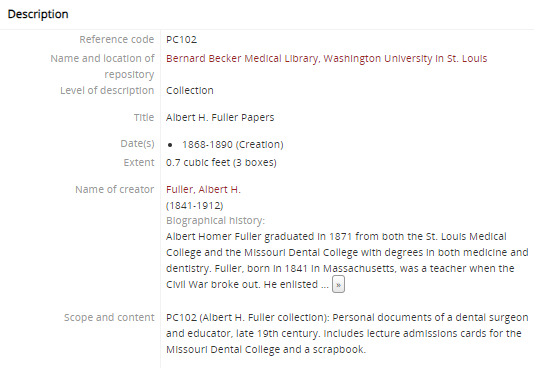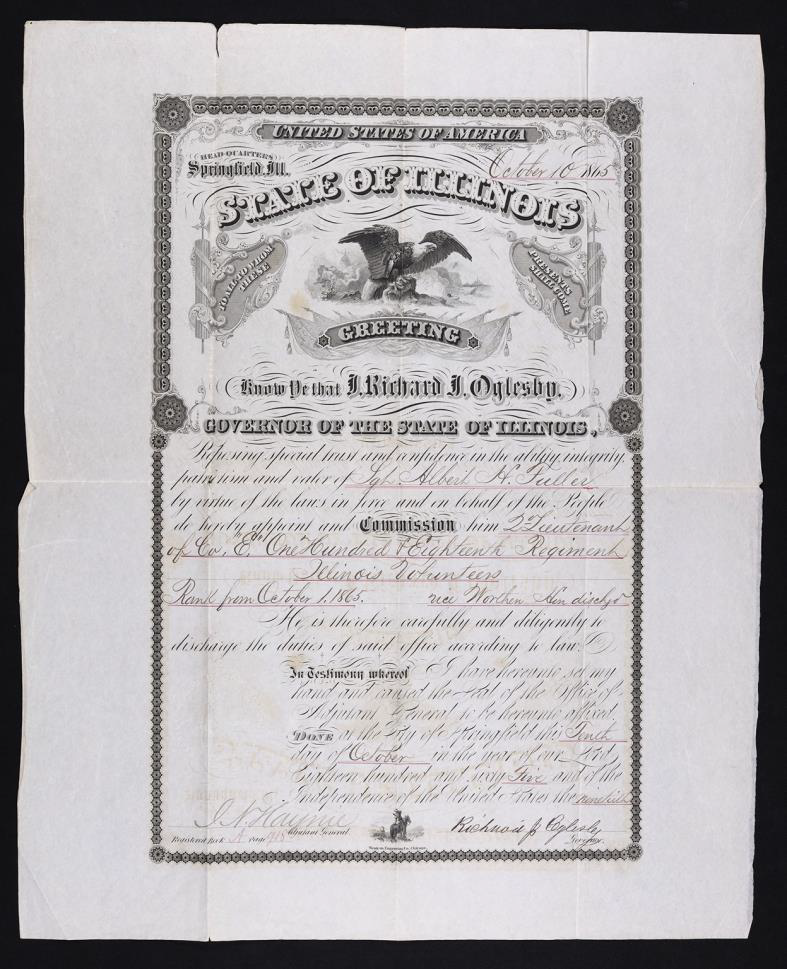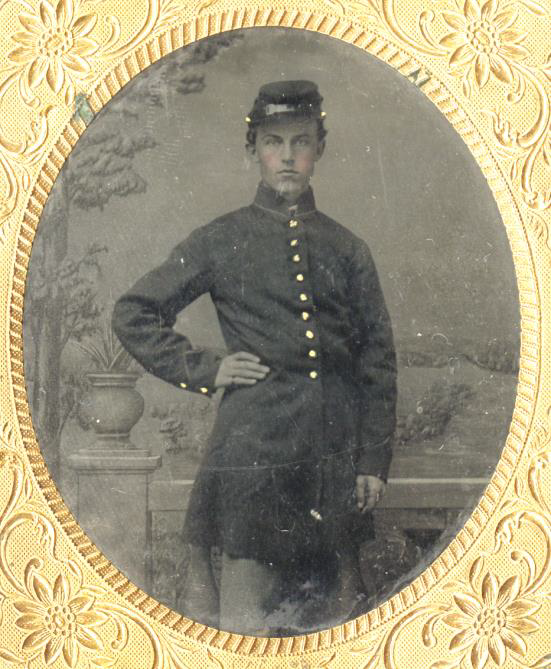Have you ever stumbled upon one of our collections that just looks a little too…sparse on the details?

This post aims to discuss what happens when you find a collection that hasn’t been described in detail yet, like the Albert Fuller Papers pictured to the right. If you have spent time looking through the Becker Archives Database, you may have noticed that a lot of our collections have been broken down into smaller divisions such as “Series,” “Box,” and “Folder.” These divisions help archivists organize archival items, and can also help researchers better pinpoint the items they would like to research.
When you are looking at a page in our database, clicking on the “collection treeview” button (highlighted to the right with the blue arrow), can show you how a collection has been split up into smaller divisions, like boxes and folders. Clicking through those smaller divisions can help researchers find more details in order to pinpoint exactly which parts of a collection they may want to search.
However, as you can see in the closeup below, not every collection has been broken up into smaller portions for description purposes.

Medical Library Archives, Washington University in St. Louis.
Right now, there’s only an umbrella description for the collection as a whole, without much more detail about more individualized contents the collection. But does that mean there’s not much interesting in the collection? Not at all! It takes time for an archivist to go through items, arrange them into smaller containers such as boxes and folders, and then create descriptive details for each container. While archivists would love to be able to itemize and describe every single collection that comes in to our archive the day it arrives, that is just not humanly possible. Sometimes that descriptive process can take years. But just because a collection has not been described in our database yet does not mean that there is nothing for your to discover about it.

Sometimes you can get more of a clue about what’s in a collection by looking at the “scope and content” field in the description that appears below the “treeview.” (In the example page above, the description notes are located below the portrait of Albert Fuller, and an excerpt of those descriptive notes is represented to the left. For example, the scope and content note for the Albert H. Fuller collection notes that the collection contains personal documents, lecture cards, and a scrapbook as well.

But wait, there’s more! You don’t have to navigate this all by yourself. If you contact the archivists at Becker Archives, we can often give you more information about a collection. For example, an archivist could tell you that last year we were gifted more items to add into Albert Fuller’s collection. In that donation, we acquired Fuller’s 1865 commission to the 118th Regiment of the Illinois Infantry, which he joined when the Civil War broke out. We also have 3 diaries that he kept while with the 118th, as well as letters he received and wrote to his family during that time. None of these items have been noted yet in the finding aid you see online, but they do exist in our collections.
Now, I am not claiming that every collection that shows a sparse description in our database is primed to reveal the hidden wonders of our collection. Most of our collections include enough information in our online database to give you a good sense of each collection’s contents. However, we are still a small group of archivists working on a multitude of projects at any given moment, which means sometimes collections must wait a while before receiving the attention they deserve.

While discovering a hidden gem in the stacks is not a guarantee, it is still worth reaching out to an archivist if you come across a collection in the Becker Archives Database that you want to know more about. This can be especially helpful if the collection description does not extend past the overarching collection level. An archivist can help you determine whether or not the collection holds material that you would like to research further.
Archivists at the Becker Library Archives can be reached by sending an email to arb@wusm.wustl.edu. If you would like to schedule an appointment to conduct research in our reading room, you can reach us at the same email address above.
If you would like more instruction on how to search the Becker Archives Database, check out the video from my colleague: “Tips for Searching the Becker Archives Database” which is also embedded below.
